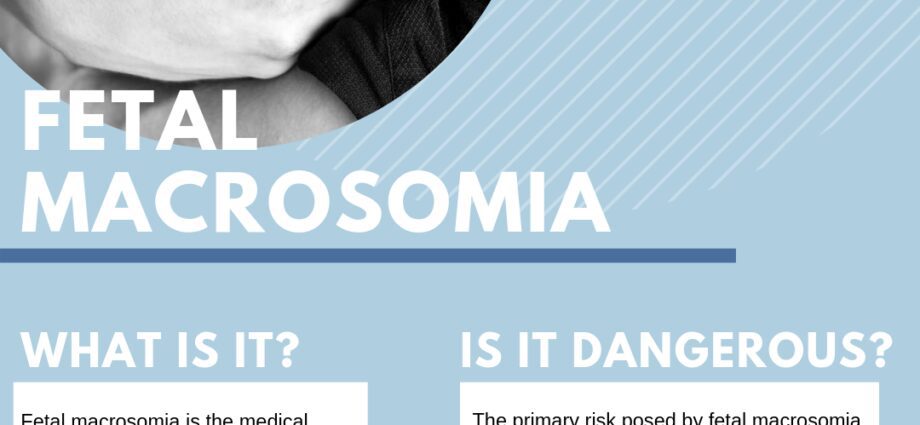Contents
Fetal macrosomia: when you are expecting a big baby
In the past, giving birth to a chubby “beautiful baby” was popular. Today, doctors monitor the size of the fetus throughout pregnancy. Fetal macrosomia, that is to say a birth weight greater than 4 kg, can indeed complicate childbirth.
What is fetal macrosomia?
Fetal macrosomia is generally defined by a birth weight greater than 4000g. It concerns about 5% of newborns. Macrosome babies don’t necessarily have more problems with being overweight than other babies as they grow older. It all depends on the origin of those few hundred grams more. The pediatrician will simply be a little more attentive to the evolution of their weight and height curves.
Diagnostic
Despite technical progress, predicting fetal macrosomia is not so easy. Abdominal palpation and measurement of uterine height during monthly check-ups with the midwife or gynecologist give an indication of the size of the fetus. The risk of fetal macrosomia can also be detected during an ultrasound but the calculation techniques to estimate the fetal weight are numerous and they are not foolproof.
The causes
Maternal diabetes, whether pre-existing or developing during pregnancy (gestational diabetes), is the leading cause of fetal macrosomia. We also know that maternal obesity multiplies by 4 the risk of fetal macrosomia. Other risk factors have also been identified: high maternal birth weight, maternal age over 35, history of fetal macrosomia in previous pregnancies, excessive weight gain during pregnancy, an outdated term.
How to reduce the risks?
Gestational diabetes being the main risk factor for fetal macrosomia, expectant mothers who are predisposed to it (over 35 years old, BMI over 25, family history of type 2 diabetes, gestational diabetes, macrosomia) are prescribed between 24 and 28 weeks of amenorrhea an “oral hyperglycemia”. This test is done on an empty stomach to check how well the body regulates circulating sugar levels in the blood. It has several stages: a blood test on arrival at the laboratory, the absorption of 75g of liquid glucose, followed by a blood test 1 hour, then 2 hours later.
When gestational diabetes is identified, future mothers benefit from special support to treat it (diet, adapted physical activities, more frequent ultrasounds to monitor fetal growth) and thus limit fetal weight gain. Women who were overweight before becoming pregnant or gaining a lot of pounds during pregnancy are also more closely monitored.
Childbirth when expecting a big baby
Fetal macrosomia can lead to complications during childbirth. On the mother’s side, it promotes bleeding during delivery, postpartum infections, cervico-vaginal lesions, uterine ruptures. On the baby side, the most frequent and feared complication is shoulder dystocia: during the expulsion, the baby’s shoulders remain blocked in the maternal pelvis while his head is already out. It is a vital emergency requiring a very precise obstetric maneuver to disengage the newborn without risk.
In view of these risks, the National College of French Gynecologists and Obstetricians has issued several recommendations:
- If the estimated fetal weight is greater than or equal to 4500 g, a basic cesarean section is indicated;
- A suspicion of macrosomia may justify induction of childbirth during the 39th week of amenorrhea;
- The choice of cesarean section or vaginal route must be made on a case-by-case basis. But in case of vaginal birth, it is recommended to practice epidural analgesia and to ensure the complete presence of the obstetric team (midwife, obstetrician, anesthesiologist and pediatrician).










